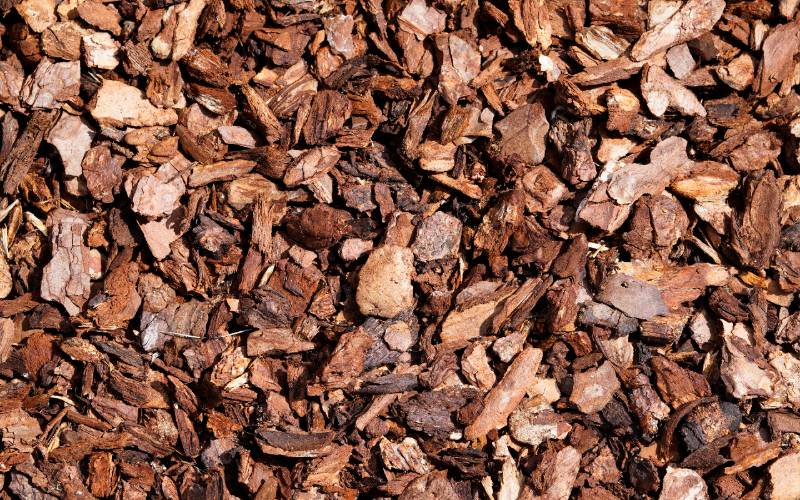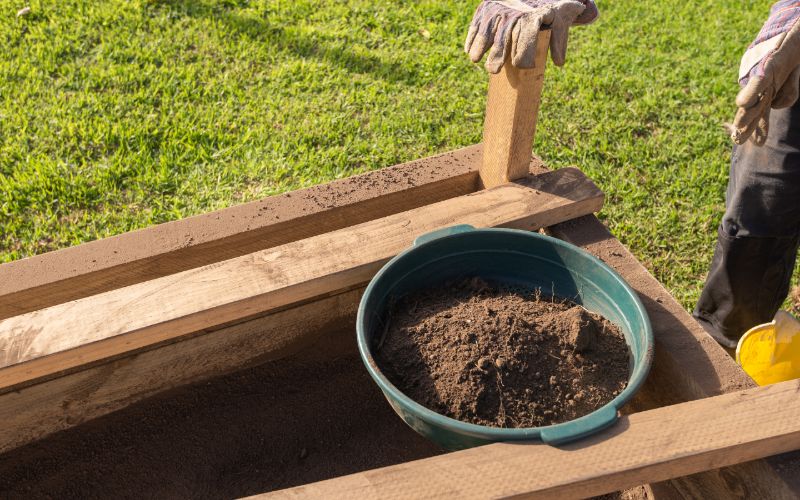How to Make Potting Soil for Bonsai Trees (2025 Step-by-Step Guide)
-
Kristin Hitchcock
- Last updated:

Bonsai trees need very special soil to work correctly and your tree may only thrive with the right soil mixture. Soil is one of the few things you ultimately control when growing your bonsai. Therefore, it’s essential to get it right.
Many bonsai stores have commercial mixes ready to go. However, that does not mean that these are the best choices for your tree. Some of these soils may not be suitable for the particular species of your tree, for instance. Plus, they can be expensive.
Therefore, many gardeners decide to mix their soil. Doing this isn’t challenging and allows you to customize the soil for your tree.
What Makes Good Bonsai Soil?
There are a few qualities that any bonsai soil must have. Since the soil impacts your tree’s health, you should aim to get the soil as perfect as possible.
The most important trait is water retention. The soil needs to hold the correct amount of water so the Bonsai can have a continual water supply. However, too much water retention is also a bad thing. Therefore, you need the correct amount of water retention.
Another essential trait is drainage. You don’t want water sitting in the pot around the plant’s roots. This can cause root rot and a range of other issues. Furthermore, soils that don’t drain well are also not aerated. The soil can build up salts, poisoning the tree over time.
How to Make Potting Soil for Bonsai Trees
1. Choose Organic or Inorganic Soil
The first decision you’ll need to make when making your potting soil is to choose between organic or inorganic soils. Organic soils are made up of dead plants. They may include ingredients like bark, peat, or leaf litter. These components break down over time, adding nutrients back to the soil. However, this also means that drainage will decrease over time. You will need to re-pot your bonsai in fresh soil eventually.
Therefore, organic potting soil is often not the best option for bonsai trees.
Inorganic soil components do not break down over time. Calcite, lava rock, perlite, and other rock-like materials fall into this category. Though they do not absorb much water, they offer lots of drainage. They also don’t absorb nutrients. However, this means that you can more easily control the amount of fertilizer in the soil.
Inorganic soil doesn’t break down much over time so once you have the perfect mixture, you won’t have to worry about continuously refreshing the soil.
2. Choose Your Components
Next, you’ll need to choose the components of your soil exactly. We highly recommend pine bark if you’re using organic soil, as it breaks down slower than other options. Therefore, it will provide structure to the soil for longer.
There are many different inorganic components that you can use, as well:
- Akadama is a clay product that is often used for bonsai trees. It’s available at bonsai shops, though finding it locally is often difficult. It does start to break down after about 2 years of use, so you’ll need to refresh the soil every couple of years. Furthermore, this option is expensive, and there are quite a few alternatives (like other clays and cat litter).
- Pumice is a type of rock that contains a lot of air. Therefore, it absorbs water very well and can help bonsai soils retain water.
- Lava rock can also be utilized to help create structure for a bonsai plant. However, roots cannot grow into lava rock, which can be a problem.
- Fine gravel is widely available and can help with drainage. It is usually put on the bottom of the pot to help water flow more quickly through the drainage holes. However, it has fallen out of use for the most part today.
- Organic potting compost is made from various ingredients, such as peat moss and sand. While this retains water and shouldn’t be used alone, it works great when combined with other materials. You need something to retain water, after all.

3. Consider the Tree Species
Different trees need different mixes. Some trees prefer drier soil to others, for instance. You’ll need to consider the specific species when creating your potting mixture. Generally, deciduous trees prefer wetter soil, while conifers prefer drier soil. However, this isn’t always the case, so research your specific tree.
You’ll also need to consider your location. If you live in a warmer climate, you should consider adding more water-retaining materials to your potting mix. At the same time, you should also consider how often you can water the tree and how wet or dry your climate is.
4. Remove Dust from the Materials
Once you have figured out the mixture and purchased your materials, you should remove dust from the soil mixture. Do this with a sieve. Simply put, sieve the material until the dust falls through the bottom, leaving the larger pieces on the sieve. You want to use these larger pieces to help keep your soil mixture well-draining.
Not all materials need to be sieved. For instance, pumice isn’t dust, so you don’t need to sift it.

5. Mix Everything Together
Next, you need to mix everything together. There isn’t a special way to do this. However, putting everything in a large ziplock bag and shaking it works well if you’re using a smaller pot. We don’t recommend mixing in the pot, as you may miss some clumps of material near the bottom.
When everything is mixed up, it’s time to add the soil to the pot and replant your tree.
Conclusion
Creating a bonsai potting mixture is mostly trial and error. You’ll need to watch your tree after creating new soil to ensure it works well. You may have to adjust the parameters to find exactly what your tree likes. Because so many factors determine what makes good soil for your tree, it’s impossible to find the perfect ratio online. You’ll have to experiment and use some of the background knowledge we outlined above.
However, most of the time, equal parts akadama, pumice, and lava rock work well. You may need to add organic soil for increased water absorption—deciduous trees often prefer more water absorption, for instance. A material needs to be at least 25% of the mixture to make a difference. Enjoy your bonsai tree!
Featured Image Credit: Crystal Raindrop, Unsplash
Contents
